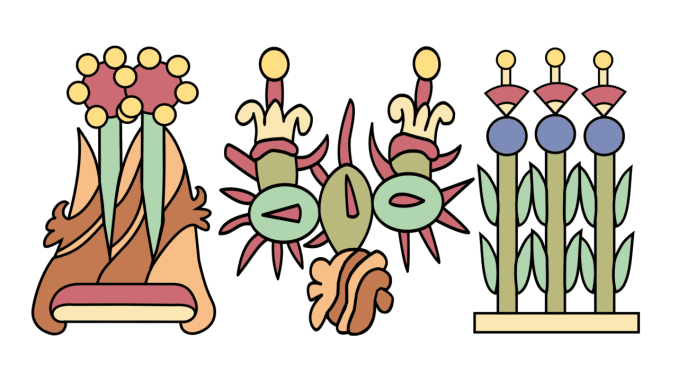
Ilancueitl was the first queen of the Aztecs. She was a Colhuacan princess who married the king of Tenochtitlan primarily for strategic purposes. She would prove to be barren and did not produce any offspring. However, because of her royal blood, later Aztec rulers would claim to be her direct descendants.
We do not know much about Ilancueitl. Facts about her life are scant. We know that she was of royal blood. In the Texacoca source, Codice Xolotl, Ilancueitl was a Colhuacan princess.[1] She was the daughter of Achitometl. She was the sister of Atotoztli, the wife of Coatlichan ruler Huetzin.[2] She married the first king of the Tenochtitlan, Acamapichtli, around 1374. We do not know how old she was when she married, but we do know that Acamapichtli was twenty-two.[3]
When he married Ilancueitl, they were welcomed by the people of the city of Tenochtitlan and were carried through the city on a throne and declared rulers of Mexico.[4] Even though Acamapichtli was the king of Tenochtitlan, he was merely a figurehead. Ilancueitl proved to be barren. Therefore, King Acamapichtli decided to take multiple wives in order to produce children. High ranking men in the area offered their daughters to their king in hopes of producing offspring that would succeed him. Some of these wives were Acazitli, Tezacatet, Ahuexotl, Ocelopan, Tenoch, and Aatel.[5] These wives would produce the most offspring of King Acamapichtli. Thus, King Acamapichtli had established the precedent of having polygamous marriages among the Aztecs.[6]
Acamapichtli had about seven sons. One of them was Huitzilihuitl, who would be his successor. Some Texacoca accounts claimed that Ilancueitl was so distraught about being barren that Acamapichtli decided to let her pretend that she had given birth to these sons herself.[7] She supposedly breastfed them and the Aztec people believed that she was the real mother.[8] She raised her step-son, Huitzilihuitl. When Huitzilihuitl came to the throne, he claimed his Colhuacan ancestry through Ilancueitl.[9] From that moment on, Mexican rulers claimed a relationship to Topiltzin Quetzalcoatl through Ilancueitl.[10]
Acamapichtli ruled for nineteen years. He died in 1391.[11] He was survived by twenty-three children. Of Ilancueitl, we have no information of when she died. Even though very little is known about her, the fact that many generations of Aztecs claimed to be her direct descendent, despite being barren, proves that she was well admired by the people. Perhaps, one day her role will be more discovered in Aztec history.
[1] Lee p. 69
[2] Lee p. 69
[3] Hassig, p. 27
[4] Billing, p. 79
[5] Hassig, p. 26
[6] Hassig, p. 2
[7] Hassig, p. 26
[8] Hassig, p. 26
[9] Hassig, p. 27
[10] Lee p. 69
[11] Hassig, p. 27
Sources:
Billing, Samantha. “Rethinking the Conquest : an Exploration of the Similarities between Pre-Contact Spanish and Mexica Society, Culture, and Royalty.” University of Northern Iowa, University of Northern Iowa UNI ScholarWorks, 2013, pp. 1–174.
Hassig, Ross. Polygamy and the Rise and Demise of the Aztec Empire. University of New Mexico Press, 2016.
Lee, Jongsoo. The Allure of Nezahualcoyotl: Pre-Hispanic History, Religion and Nahua Poetics. University of New Mexico, 2008.

Be the first to comment